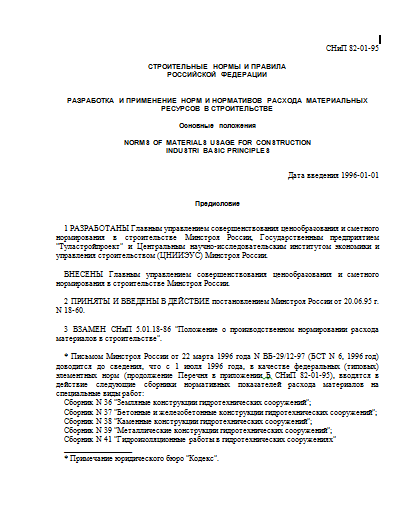Ekzamenacionnie Bileti Dlya Slesarej Po Ekspluatacii I Remontu Gazovogo Oborudo

Special fast setting and drying (24 hours) hydraulic binder for shrinkage-compensated screeds MMapecemM apecem • Do not wet the surface of a screed laid with Mapecem. • Do not mix in batching plants and do not transport the mixture by cement mixer lorry: the setting time of Mapecem is too. With mountain views, Ekološka turistična kmetija pri Lovrču is set in Tolmin and has a restaurant, a shared lounge, bar, garden and barbecue. Free WiFi is provided. All units come with a terrace with garden views, a kitchen with a dishwasher and an oven, and a private bathroom.
Catalogue Persistent Identifier APA Citation Anikin, Andrei Vladimirovich. & Osadchaia, I. M. & Fedorov, B.
Anglo-russkii slovar po ekonomike i finansam: okolo 75000 slov i vyrazhenii. Sankt-Peterburg: Ekon. Shkola MLA Citation Anikin, Andrei Vladimirovich. and Osadchaia, I. M. and Fedorov, B. Anglo-russkii slovar po ekonomike i finansam: okolo 75000 slov i vyrazhenii / pod redaktsiei A.V. Anikina; [avtory-sostaviteli, Andrei Vladimirovich Anikin, Irina Mikhailovna Osadchaia, Boris Grigorevich Fedorov] Ekon. Shkola Sankt-Peterburg 1993 Australian/Harvard Citation Anikin, Andrei Vladimirovich. & Osadchaia, I.
M. & Fedorov, B. 1993, Anglo-russkii slovar po ekonomike i finansam: okolo 75000 slov i vyrazhenii / pod redaktsiei A.V.
Anikina; [avtory-sostaviteli, Andrei Vladimirovich Anikin, Irina Mikhailovna Osadchaia, Boris Grigorevich Fedorov] Ekon. Shkola Sankt-Peterburg Wikipedia Citation. Anglo-russkii slovar po ekonomike i finansam: okolo 75000 slov i vyrazhenii / pod redaktsiei A.V. Anikina; [avtory-sostaviteli, Andrei Vladimirovich Anikin, Irina Mikhailovna Osadchaia, Boris Grigorevich Fedorov] Book Bib ID 1826044 Format Book, Description Sankt-Peterburg: Ekon. Shkola, 1993 578 p.; 24 cm.
ISBN Series Biblioteka 'Ekonomicheskoi shkoly'; vyp. Notes 'Broad coverage of British and American usage in all fields of economics, business and finance, including business colloquialisms and stock market slang.' --Book jacket. Subjects Other authors/contributors Also Titled English-Russian dictionary of economics and finance.
Abstract The hypersonic effect is a phenomenon in which sounds containing significant quantities of non-stationary high-frequency components (HFCs) above the human audible range (max. 20 kHz) activate the midbrain and diencephalon and evoke various physiological, psychological and behavioral responses. Yet important issues remain unverified, especially the relationship existing between the frequency of HFCs and the emergence of the hypersonic effect.
In this study, to investigate the relationship between the hypersonic effect and HFC frequencies, we divided an HFC (above 16 kHz) of recorded gamelan music into 12 band components and applied them to subjects along with an audible component (below 16 kHz) to observe changes in the alpha2 frequency component (10–13 Hz) of spontaneous EEGs measured from centro-parieto-occipital regions (Alpha-2 EEG), which we previously reported as an index of the hypersonic effect. Our results showed reciprocal directional changes in Alpha-2 EEGs depending on the frequency of the HFCs presented with audible low-frequency component (LFC). When an HFC above approximately 32 kHz was applied, Alpha-2 EEG increased significantly compared to when only audible sound was applied (positive hypersonic effect), while, when an HFC below approximately 32 kHz was applied, the Alpha-2 EEG decreased (negative hypersonic effect). These findings suggest that the emergence of the hypersonic effect depends on the frequencies of inaudible HFC. Citation: Fukushima A, Yagi R, Kawai N, Honda M, Nishina E, Oohashi T (2014) Frequencies of Inaudible High-Frequency Sounds Differentially Affect Brain Activity: Positive and Negative Hypersonic Effects. PLoS ONE 9(4): e95464.
Editor: Joel Snyder, UNLV, United States of America Received: November 15, 2013; Accepted: March 26, 2014; Published: April 30, 2014 This is an open-access article, free of all copyright, and may be freely reproduced, distributed, transmitted, modified, built upon, or otherwise used by anyone for any lawful purpose. The work is made available under the Creative Commons CC0 public domain dedication. Funding: This work was partly supported by JSPS KAKENHI Grant Number 22240049 and by MEXT KAKENHI Grant Number 22135008 for MH. This work was partly supported by JSPS through the “Funding Program for Next Generation World-Leading Researchers” for EN, initiated by the Council for Science and Technology Policy. The funders had no role in study design, data collection and analysis, decision to publish, or preparation of the manuscript.
Competing interests: The authors have declared that no competing interests exist. Introduction It is generally accepted that humans cannot perceive air vibrations in the frequency range above 20 kHz as sound. Iq test questions and answers. Oohashi et al.